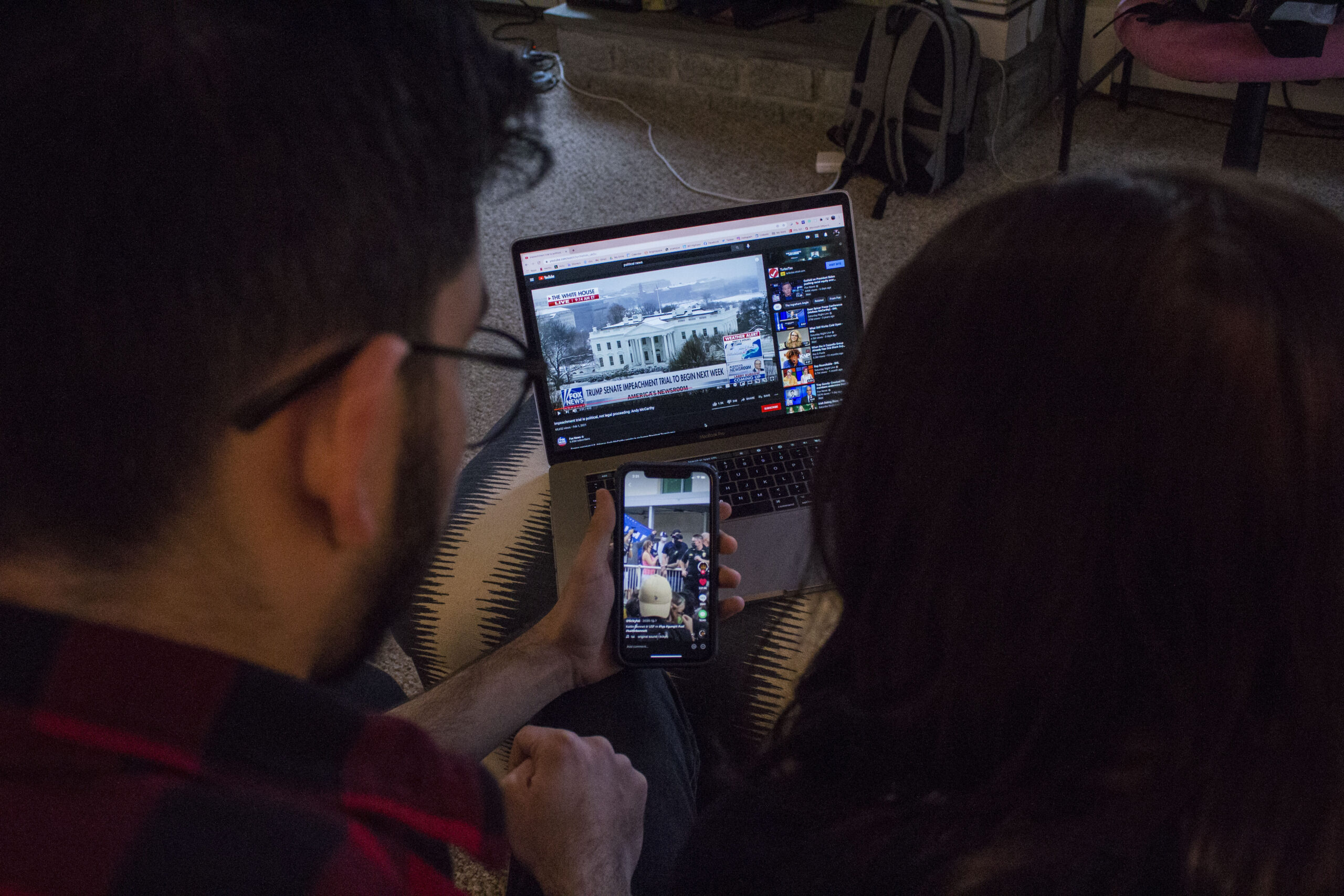According to the Pew Research Center, nearly a quarter of people now get their news from social media, but is it really reliable? Photo by James McIntosh
Social media is one the largest and fastest-growing platforms for communication, in the last five years transforming rapidly into a major source for politically-related news.
Social media sites like Youtube and Tik Tok have become prominent sources for political news, with even prominent newspapers like The New York Times and The Washington Post creating channels and now using them regularly.
There are also numerous celebrities and bloggers who use social media as their primary way of spreading thoughts and opinions. According to Pew Research Center, in recent years social media has outdone print newspapers as a news source.
University of Rhode Island journalism professor Jason Jaacks said this phenomenon has increased substantially recently but has been going on for years.
“This isn’t anything new,” Jaacks said. “We saw that in a very dramatic way leading into the 2016 election, and it started even before then.”
Emily Lynch, a political science professor at URI, agreed with Jaacks, saying,”We saw this with Facebook and Twitter in 2016. Even before social media, we saw similar things happen when the internet was new and when television news was new as well.”
The percentage of people who get their news from social media often has increased from 18 to 23 percent since the 2016 election, according to Pew Research Center. However, that large increase in using social media as a news source does not necessarily mean that it is a reliable news source.
Since the 2016 election, these apps and sites have been the platform for people, some of whom spread misinformation, to speak their minds. Recently, due to the spread of misinformation and ideologies over social media, the United States Capitol was stormed.
“There is a lot more access to the news these days,” Lynch said. “It is so easy to find news but just because it is more accessible doesn’t mean everyone is getting the news. You would think that the increase in [the] availability of the news would result in more political knowledge, but it doesn’t.”
Even with the accessibility of these new sources, the Pew Research Center study shows that a majority of people believe these sources are unreliable and the trust in these sources has not increased.
Lynch said that it is not the social media sites over which misinformation is spread, but the people who spread that information that is harming political news coverage. Jaacks shared a similar sentiment to Lynch.
“It is not so much that the technology is bad,” Jaacks said. “It is more about when technology is left unchecked, these sites are often used by the worst players, who, in this context, are people on social media who are using these platforms to recruit and to incite civil unrest.”
The sites themselves are not to blame so to say, according to Lynch, but the people using them for inappropriate reasons as mentioned by Jaacks.
”Some of these new sources on social media are good for us,” Lynch said. “We see newspapers like The New York Times and The Washington Post creating channels on Youtube. Those reliable sources being more accessible is a huge bonus.”
Jaacks said it is impossible to know what will happen with social media news in the future. Journalists are in an environment that has set them up to fail, according to Jaacks, but he is hopeful that professional reporters will continue to uphold journalistic standards in the future despite the modern circumstances.

